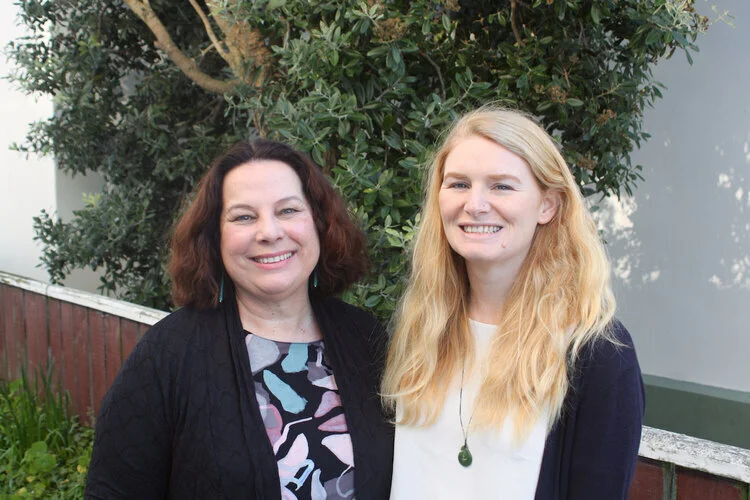Let’s talk together about suicide
NOTE: If suicidal thoughts are troubling you or this article unsettles you, please reach out for some help. Talk with someone you trust, see a doctor or counsellor, or call 1737 to speak to a trained counsellor, available 24 hours a day, seven days a week.
This is part of a helpful series of weekly articles and stories on Mental Wellbeing presented by Suzie Baird and Tricia Hendry to help the Church build our knowledge, understanding, and skills to strengthen our communities.
____
“There is no suffering greater than that which drives people to suicide. Suicide defines the moment in which mental pain exceeds the human capacity to bear it.”
Tragically, 654 New Zealanders died by suicide in the last year. Many more will have attempted to take their own lives. More still will have been struggling at times with thoughts of suicide. And there will also be many who found their way towards hope and recovery.
In our next few articles we’ll look honestly at issues relating to suicide. It’s a complex issue. People commonly underestimate how many different factors can contribute to it. Over the years, the myths and misinformation about suicide have increased the judgements, stigma, guilt, shame and whakamā experienced by those affected by it. They’ve also unhelpfully prevented people from reaching out for help they’ve needed. We can be so thankful today for the increasing number of people with lived experience of suicidal thinking or attempts who’ve shared their stories of survival and re-finding hope. This has ignited more honest conversations about life and mental pain and recovery, including in our churches. Their voices remind us that many people have lives that can be transformed rather than ended. Renowned mental health specialist Eduardo Vega asserts that “for millions out there, the experience of wanting to die, the most intensely painful moments or even years with thoughts and feelings of suicide, have been the crucible of personal transformation through which their greatest strengths and purpose were revealed.” This is good news that we may inadvertently overlook.
Using the insights gained from those who’ve openly shared their stories with researchers, let’s myth bust five common misunderstandings…
MYTH: People who think about suicide, or die by suicide, are weak and selfish.
FACT: Anyone considering suicide is experiencing acute and overwhelming mental pain and cannot find a reason to live. Ending the pain becomes their preoccupying focus, not death. They are no more selfish or weak than anyone in acute physical pain wanting greater medication relief when they can’t bear their pain’s intensity. They need our love, compassion, and respect – not judgement. So do their families and whānau.
“When people are suicidal, their thinking is paralysed, their options appear spare or non-existent, their mood is despairing, and hopelessness permeates their entire mental domain. The future cannot be separated from the present, and the present is painful beyond solace.”
Suicidal thinking can become compulsive when mental pain takes hold and distorts thinking and perspective. Remember, there are several strong biblical characters in such despair that for a while they focus on death, including Job, David, Moses, Elijah, Jonah, and the Philippian jailor in Acts. God clearly knows how intense mental distress can be for some people. Mental distress and situational crises can affect anyone.
“Suicide is not chosen; it happens when the pain exceeds the resources for coping with that pain.”
These honest words from survivors give us more insight into that kind of mental pain…
“I didn’t want to leave. I just didn’t know how to stay.”
“I didn’t want to leave you. I wanted to leave myself.”
MYTH: Everyone who thinks about or acts on suicide has a mental illness.
FACT: No. There’s no single cause for suicide. Anyone can have thoughts of suicide, including those with no history of mental distress at all. In fact, having fleeting thoughts about suicide is a relatively common human experience, but they usually soon pass. There is a higher risk when life’s stresses and a lack of wellbeing converge together to create a sense of hopelessness. Suicidal thoughts can then become more persistent, and more dominating. Those who do live with mental distress are, however, at an increased risk of this. Other factors that can also increase the risk include intense personal crisis, very high levels of ongoing stress, using drugs and alcohol, being exposed to others’ suicide, having easy access to lethal means, and previously having experienced significant trauma.
MYTH: Asking someone if they’re having thoughts of suicide puts the idea in their head.
FACT: Research confirms this isn’t so. It’s much more likely to demonstrate that you care and are concerned for them. A gently asked honest question can help a person to open up and reach out for help. It can assist someone’s journey towards recovery and potentially save a life.
MYTH: People who talk about suicide just do it for attention. They never do it.
FACT: Sadly, this isn’t true. Talking about suicide (or threatening it) indicates a person has suicide on their mind. Always take it seriously. The person may be planning to act on it and testing out ideas on those they know. The best response is to express your care and concern, give them some of your time, and offer to help them to find the support they’re most needing. If they’re clearly at immediate risk of harm, call 111 or go with them to a local emergency clinic or doctor. The sooner they get support to begin to recover the better.
MYTH: If a person has attempted suicide they won’t attempt again.
FACT: A suicide attempt tells us that a person needs both immediate help and ongoing support. It also warns us they’re now at higher risk of future attempts. This risk actually increases with each subsequent attempt. Surround them with love and care, support them to use professional help, and encourage hope for a better future. Remember, most people who experience suicidal thinking and/or attempts recover well to live hope-filled, rewarding lives.
Suicide is a heavy topic, so this week maybe choose to do something life affirming, spirit lifting and hope inspiring! Look after your mental health as well as you can. See the note at the start of the article if what you’ve read has unsettled you. “May the Master pour on the love so it fills up your life and splashes over on everyone around you.” (1 Thessalonians 3:12, The Message)
By Tricia Hendry
A REMINDER: If suicidal thoughts are troubling you or this article unsettles you, please reach out for some help. Talk with someone you trust, see a doctor or counsellor, or call 1737 to speak to a trained counsellor, available 24 hours a day, seven days a week.
___
Suzie Baird is a mental health advocate. She has lived experience of mental distress that helps her to support others and educate those wanting to understand more. She attends Lyall Bay Community Church, an Anglican pioneer mission unit.
Tricia Hendry is a writer and educator specialising in issues relating the mental health and resilience. She has many years’ experience supporting others through mental health and trauma challenges. She attends All Saints, Hataitai.




